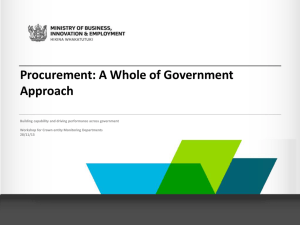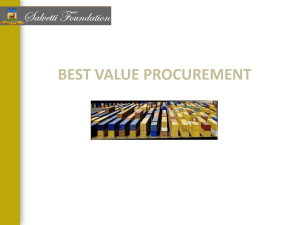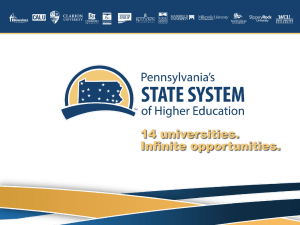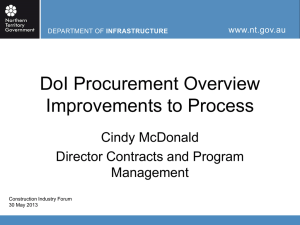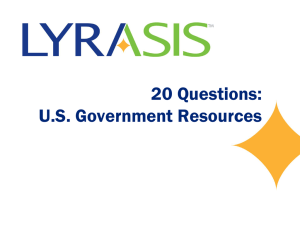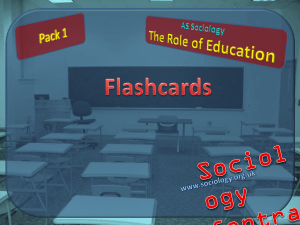PFM Powerpoint Template STYLE 5
advertisement
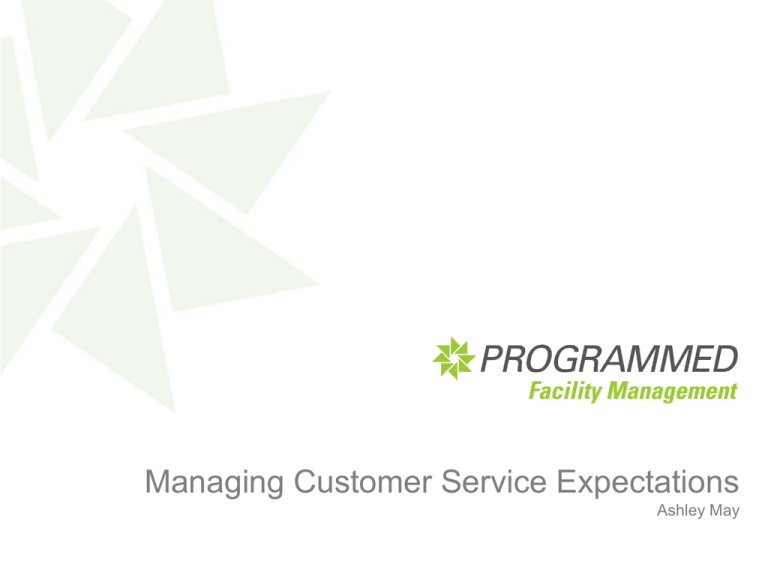
Title Heading here Managing Customer Service Expectations Ashley May Agenda 2012-13 Facilities Management Industry Census Value for Money Aligning Customer Expectations Through the Procurement Process Customer Alignment KPIs 2012-13 Facilities Management Industry Census 2012-13 Facilities Management Industry Census 2012-13 Facilities Management Industry Census 2012-13 Facilities Management Industry Census 2012-13 Facilities Management Industry Census Value for Money “The price of the goods and services is not the sole determining factor in assessing value for money. A comparative analysis of the relevant financial and non-financial costs and benefits of alternative solutions throughout the procurement will inform a value for money assessment. Factors to consider include, but are not limited to: - fitness for purpose; - a potential supplier’s experience and performance history; - flexibility (including innovation and adaptability over the lifecycle of the procurement); - environmental sustainability (such as energy efficiency and environmental impact);and - whole-of-life costs” Australian Government – Department of Finance & Deregulation Value for Money Cost Customer Satisfaction Value for Money Value for Money Cost Customer Satisfaction Value for Money Cost Customer Satisfaction Value for Money Satisfaction is a result of meeting expectations Customer expectations are required to be defined from the outset Expectations need to be calibrated against value for money Communicated back to the customers Aligning Customer Expectations Through the Procurement Process Service Level Customer Expectation Fully Understood Service Level Supplier Expectation Time Contract Commencement Aligning Customer Expectations Through the Procurement Process Service Level Customer Expectation Fully Understood Service Level Supplier Expectation Time Contract Commencement Aligning Customer Expectations Through the Procurement Process Pre Works – – – – Customer identification Define customer expectations Rationalise and prioritise needs versus wants – communicate Engage industry as a stakeholder Industry sounding – Suppliers, peers and current provision of services EOI/RFT – Briefings from stakeholders re customer expectations – Interactive workshops Operations – Service Level Agreement – refinement at a minimum annually – Include measurement of customer satisfaction Aligning Customer Expectations Through the Procurement Process Service Level Customer Expectation KPI’s Calibrated and reviewed to ensure customer expectation is maintained Supplier Expectation Tender Period Contract Commencement Time Customer Alignment KPIs Lag Indicators – Customer Satisfaction Surveys • Work Order Level • Faculty / Departmental – Customer Complaints Lead Indicator – Opportunity for Improvement Register – Joint Outcomes KPI • • • • Annual Workshops with Key Customers Review past 12 months and plan forthcoming 12 months Quick Wins & Projects Identified KPI to deliver outcomes to agreed plan Summary Spend time engaging with your customers prior to tender Articulate clearly what value for money means for each tender Engage with industry Consider lead indicators when setting KPIs Communication through the full contract cycle is critical
